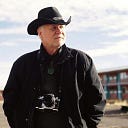Storytelling with a camera is not only fun, it can be important as well
The stories of our times, our dreams, or our unique perspective deserve to be told with photographs whenever possible.
I wanted her to be looking out of the frame with an expression that was both intriguing and soft. I would like this picture to be more than a representation of her, it should be something that could evoke a response in any viewer.
I have always been in love with the still image. From the beginning, the perfect image would captivate me totally. From Robert Frank to Ansel Adams to Peter Lindbergh, the deliberately created photograph would pull me in.
And they told stories as well. A full novel in a landscape by Robert Adams, a short story in a piece by Stephen Shore, or a delicate poem in the works of Sarah Moon.
I choose still imagery over motion. I enjoy a movie now and then, but a cup of coffee and a good book of photographs can be so much more satisfying.
However, there are times when photography isn’t just about isolated images, it’s about weaving tapestries into visual narratives. It’s about choosing the right threads, the right moments, and then spinning them into a set of images that resonate.
I think of it this way. A single photo can be a perfect gem, but occasionally that gem can use some visual context to frame it to be more than itself through the power of the group. One photograph may be a paragraph, but a set of photos may tell a complete story.
A single photo could be a snapshot, a glimpse into the real world. But a series of photos can tell a story visually.
That’s a tremendous journey.
That’s a novel.
That’s “War and Peace” with a side of Ellen VonUnwerth.
We’re wired for great stories. From cave paintings to Netflix binges, we humans are suckers for stories that surprise us, entertain us, teach us.
We seem to crave the beginning, the middle, the end.
We want the twists, the turns, the surprises of a narrative.
We adore the hero, the villain, the unexpected llama.
Okay, maybe that’s just me. I like llamas. I even like saying llamas. Try it… go ahead.
Look, when photographers turn to visual storytelling, they’re not just creating art.
They’re building bridges.
Cultural bridges.
They’re inviting viewers to step into a world, to walk a mile in someone else’s shoes, or paws, or fins. They become a conduit from the world to the frame of the story. That frame gives the story boundaries, edges, and let the story breathe its own life.
From a story about drilling equipment in East Texas
Shooting stories can simply be fun.
It’s like being a film director, but without having to deal with those overacting divas and difficult leading men.
It’s like being a novelist without writer’s block and crumpled paper, choosing instead a lightproof box with film or card.
It’s pure, unadulterated, creative joy.
But it’s more than fun.
It’s also a responsible thing to do.
When we tell stories, we shine a light.
We reveal truths.
We give voice to the voiceless.
We challenge assumptions.
We provoke thought.
We stir empathy.
And in this crazy, wacky world, we could all use more empathy, ya know?
So grab your cameras and look beyond the single frame.
Find the story.
Weave the narrative.
And remember, if at first you don’t succeed, fill another card.
After all, every picture can tell a story, but a series of pictures?
Now that just might be a bestseller.
I am teaching an 8-week workshop on visual storytelling. Here is more information if you are interested. We start this coming week.
